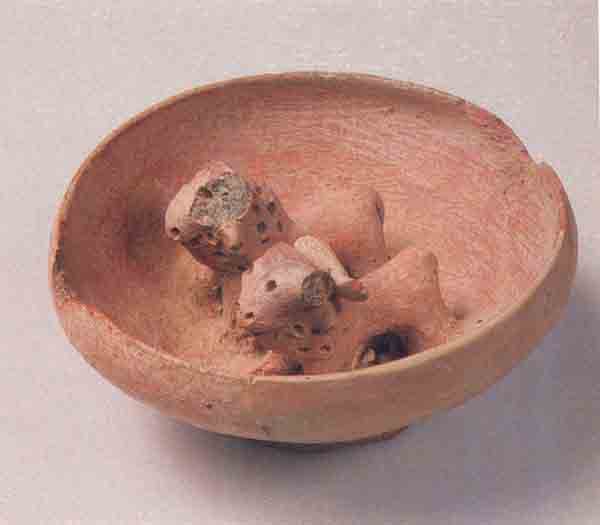Image Details

Israel Antiquities Authority/Israel Museum
Yoked oxen stand attached to the inside of this ceramic bowl found near Ai, in Samaria. Dated to the Early Bronze I period (3200–2850 B.C.E.), this bowl is one of the earliest pieces of artifactual evidence that suggest the invention of the plow in that period. Archaeologists believe the plow was invented in northern Mesopotamia in the early fourth millennium B.C.E. and that it spread through the Near East and to northeastern Europe over the next 500 years. The plow revolutionited farming by replacing hoe-based agriculture and thereby enabling farmers to cultivate much larger tracts of land. According to Professor Ruth Amiran, the bowl was probably a tomb offering and may be a cult object embodying a fertility metaphor connected with fields and/or animals.
